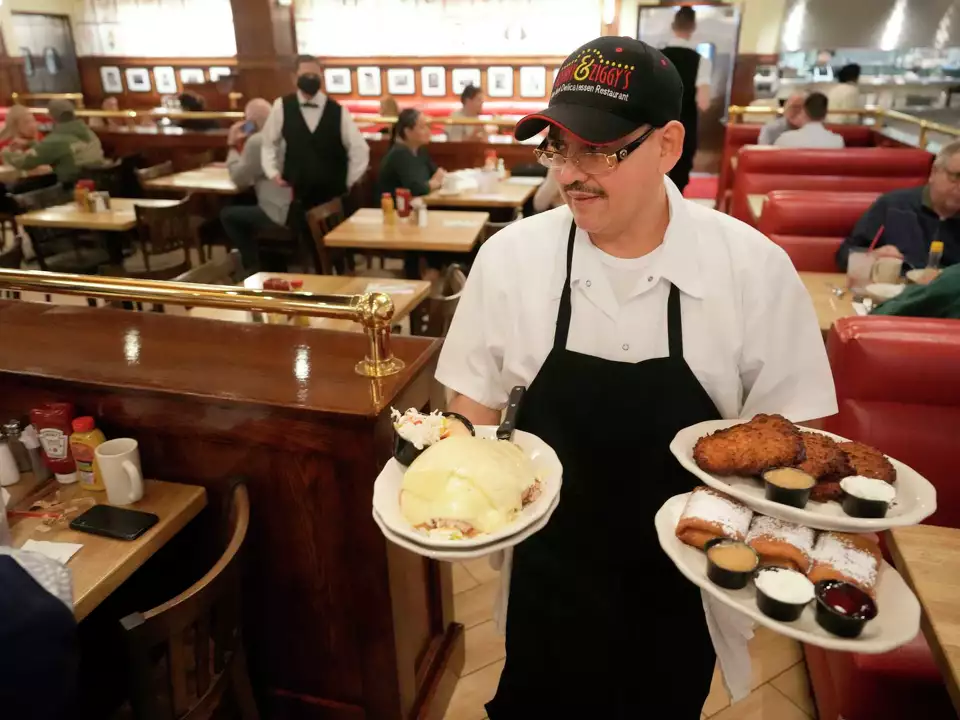Houston businesses, particularly those in the food industry, are once again feeling the pressure of skyrocketing egg prices. The bustling breakfast scene at Kenny & Ziggy’s New York Delicatessen on Post Oak Boulevard exemplifies the situation. Despite the persistent rainfall, patrons continue to flock to the eatery, craving its renowned omelets, shakshuka, and other egg-centric dishes. The delicatessen relies heavily on eggs, featuring them in over half of its 200 menu items, including staples like noodles, matzoh balls, cakes, and cookies. Consequently, any fluctuation in egg prices resonates deeply with the establishment’s operations.
Egg prices have risen sharply across the United States. As of January 31, the U.S. Department of Agriculture reported a dozen conventional eggs selling for $6.70, a notable increase from $6.55 the previous week and a substantial jump from $4.62 earlier in January. This price escalation is primarily attributed to the resurgence of the highly pathogenic avian influenza, which wreaked havoc on the poultry industry two years ago. Recent outbreaks have resulted in the depopulation of over 13.2 million birds in December, with an additional 8 million culled in the early weeks of 2025.
A report from the USDA highlights the current market reality: demand for eggs is moderate to very good, but offerings and supplies remain very light to moderate. David Anderson, a leading agricultural economist at Texas A&M University, explains that the ongoing avian flu outbreaks continue to decimate poultry flocks, severely impacting egg availability. Once a flock is reduced, it takes time to recover. Broiler chickens may reach market size in six to seven weeks, but laying hens require approximately 26 weeks to begin egg production, elongating the recovery process.
Compounding the issue is the inelastic demand for eggs. Consumers maintain their purchasing habits despite rising prices because eggs are a staple in many diets and recipes. This economic principle indicates that price increases do not substantially reduce demand, placing further strain on businesses like Kenny & Ziggy’s. Owner Ziggy Gruber emphasizes the challenge, noting that unlike other ingredients, eggs cannot be stockpiled due to their perishable nature. Freshness is paramount, and stale eggs simply will not do.
Gruber faces a mounting egg bill, spending around $18,000 each week. His establishment goes through 50 cases of eggs approximately every two days, totaling 9,000 eggs. With each case currently costing about $105, the financial burden is significant. While Gruber has not yet adjusted menu prices in response, he remains vigilant, recognizing that quality and portion sizes must be preserved even amidst economic pressures.
Reflecting on the pattern of the egg market, Anderson notes that the volatility works in both directions. Two years ago, after the avian flu diminished with the end of winter, egg production ramped up, leading to a steep decline in prices from over $5 per dozen in December 2022 to just 84 cents in May 2023. This historical context offers a glimmer of hope for businesses and consumers hoping for a similar recovery.
Gruber stresses the need for governmental attention to address the pervasive issue of egg prices. He believes that raising public awareness and voicing concern could facilitate a resolution. The economic implications of high egg prices extend beyond individual businesses, affecting the broader community and warranting scrutiny from policymakers.

